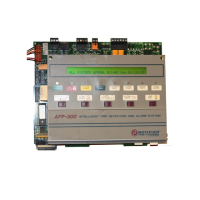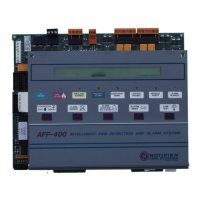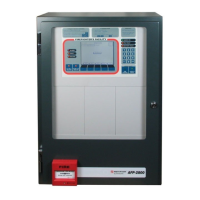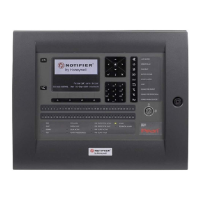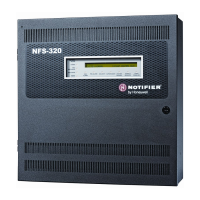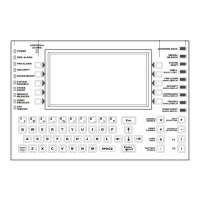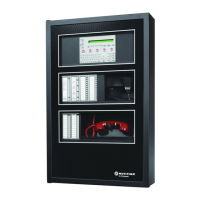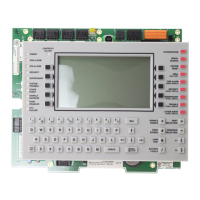AFP-3030 Programming Manual — P/N DOC-01-032:A 26/06/2015 153
Glossary
NAC (Notification Appliance Circuit) A circuit or path directly connected to a notification appli-
ance device (a fire alarm system component--such as a bell, speaker, strobe, and so on--that pro-
duces an audible output, a visual output, or both). On this panel, NACs can be transponder points or
control modules.
New device A device connected to the control panel, but not in program memory.
Non-latching An attribute of a device that follows the state of the fire alarm system. That is, if a
device is non-latching, it returns to its normal state automatically when the condition clears.
Notification Appliance Circuit see NAC.
Obscuration A reduction in the atmospheric transparency caused by smoke, usually expressed in
percent per foot.
Output circuit A control module connected to the SLC.
Point A system memory address occupied by an addressable SLC device, Software Zone, or
annunciator. For example, the control panel considers “L01M102”, a module on loop 1 at address
102, as a point.
Panel sounder The piezo sounder on control panel, that pulses when faults and alarms occur.
Primary zone The zone in the first position of a point’s zone map. The FACP looks at this zone for
certain functions, such as some Cross Zone activations or Walk Test participation.
Silence Inhibit Timer A user-defined timer that disables the signal silence key function for the
programmed time (0-300 seconds) when afire alarm occurs. All subsequent alarms can be silenced
immediately.
SLC (Signalling Line Circuit) A physical wire loop used to connect addressable detectors and
modules to the control panel.
General Zone A label, internal to the fire alarm system, assigned to a group of addressable
devices.
Switch Inhibit A software function that allows the programming of control modules and NACs so
an operator cannot manually activate NACs. With Switch Inhibit enabled, an operator cannot man
-
ually activate the NACs from the control panel.
System Normal message A message that displays on the second line of the LCD display during
normal operation of the control panel.
System Reset Pressing the System Reset fixed function key will clear all latched alarms and other
events if the initiating condition is gone. LEDs associated with these events will turn off. Unac
-
knowledged events will not prevent reset from functioning. If alarms or other off-normal events
exist after reset, they will resound the system. The System Reset key will not function if the pro
-
grammable Silence Inhibit timer is running. If multiple
The System Reset key will not immediately silence active outputs. If the Control-by-event pro-
gramming for the output evaluates false after reset, the output will deactivate. (Typically this is 30
seconds local, 60 seconds network.)
Terminal Interface EIA-232 bidirectional serial port used for upload and download functions.
Tracking An attribute of a device that allows it to enter an active state when a condition causes its
activation, then to return from an active to an inactive state when the condition causing its activa
-
tion is corrected.
Type Code A Type Code is a software function that specifies the function of a detector, control
module, monitor module, transponder point, or NAC. (You can select a Type Code while program
-
ming a point). The Type Code specifies what action the control panel takes when the point acti-
vates. For example, when a monitor module with evacuate as a Type Code activates, the control
panel activates all outputs.
